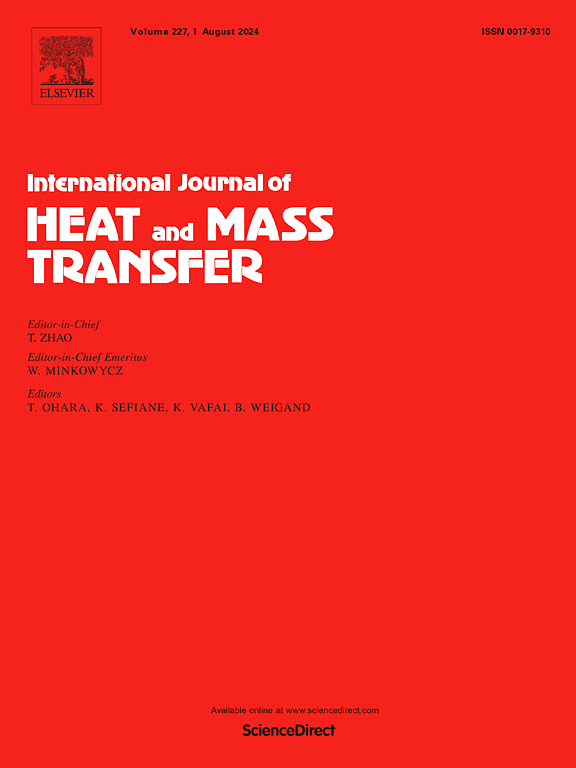利用遗传算法对三层夹芯板的主动冷却和抗压承重性能进行多目标优化
IF 5
2区 工程技术
Q1 ENGINEERING, MECHANICAL
International Journal of Heat and Mass Transfer
Pub Date : 2024-11-08
DOI:10.1016/j.ijheatmasstransfer.2024.126404
引用次数: 0
摘要
带有桁架芯材的夹芯板具有散热和承重等多种功能,是多功能应用的理想选择。然而,要优化热性能和机械性能,往往需要对夹芯采用不同的结构参数。因此,有必要在结构设计时平衡热性能和机械性能。本研究对一种金字塔格状夹芯板进行了热负荷和压力负荷同时作用下的评估。采用 NSGA-II 算法对夹芯板的多功能设计进行了优化,以提高主动冷却效率、承载能力和轻质指数。设计变量包括芯材参数,如支柱直径、倾斜角度和芯材高度。利用 k-ω SST 湍流模型进行 CFD 模拟,评估了夹芯板的主动冷却性能。同时,利用理论关系评估了抗压承载能力和轻质指数。为了验证优化结果,还进行了强制对流实验和准静态平面外压缩试验。根据 NSGA-II 算法预测的帕累托方案,确定了最佳设计点。优化设计所预测的传热系数和坍塌强度分别在实验数据的 15% 和 6.3% 以内。与初始设计相比,最优设计将传热系数提高了 79.1%,塌陷强度提高了 40.6%,同时保持了几乎相同的相对密度。本文章由计算机程序翻译,如有差异,请以英文原文为准。
Multi-objective optimization of active cooling and compressive load-bearing performance of truss-cored sandwich panel using genetic algorithm
Sandwich panels with truss cores offer versatile capabilities, such as heat dissipation and load-bearing, making them promising options for multifunctional applications. However, optimizing thermal and mechanical performance often requires different structural parameters for the sandwich cores. Therefore, it is necessary to balance thermal and mechanical performance during structural design. In this study, a pyramid lattice-cored sandwich panel was evaluated under simultaneous thermal and pressure loads. The multifunctional design of the sandwich panel was optimized using the NSGA-II algorithm to enhance active cooling efficiency, load-bearing capacity, and lightweight index. The design variables included core parameters such as strut diameter, inclination angle, and core height. The active cooling performance of the sandwich panel was assessed using CFD simulation with the k-ω SST turbulence model. Meanwhile, the compressive load-bearing capacity and lightweight index were evaluated using theoretical relations. To validate the optimization results, forced convection experiments and quasi-static out-of-plane compression tests were conducted. From the Pareto solutions predicted by the NSGA-II algorithm, the optimal design point was identified. The predicted heat transfer coefficient and collapse strength of the optimal design were within 15 % and 6.3 %., respectively, of the experimental data. Compared to the initial design, the optimal design increased the heat transfer coefficient by 79.1 % and the collapse strength by 40.6 %, while maintaining nearly the same relative density.
求助全文
通过发布文献求助,成功后即可免费获取论文全文。
去求助
来源期刊
CiteScore
10.30
自引率
13.50%
发文量
1319
审稿时长
41 days
期刊介绍:
International Journal of Heat and Mass Transfer is the vehicle for the exchange of basic ideas in heat and mass transfer between research workers and engineers throughout the world. It focuses on both analytical and experimental research, with an emphasis on contributions which increase the basic understanding of transfer processes and their application to engineering problems.
Topics include:
-New methods of measuring and/or correlating transport-property data
-Energy engineering
-Environmental applications of heat and/or mass transfer

 求助内容:
求助内容: 应助结果提醒方式:
应助结果提醒方式:


